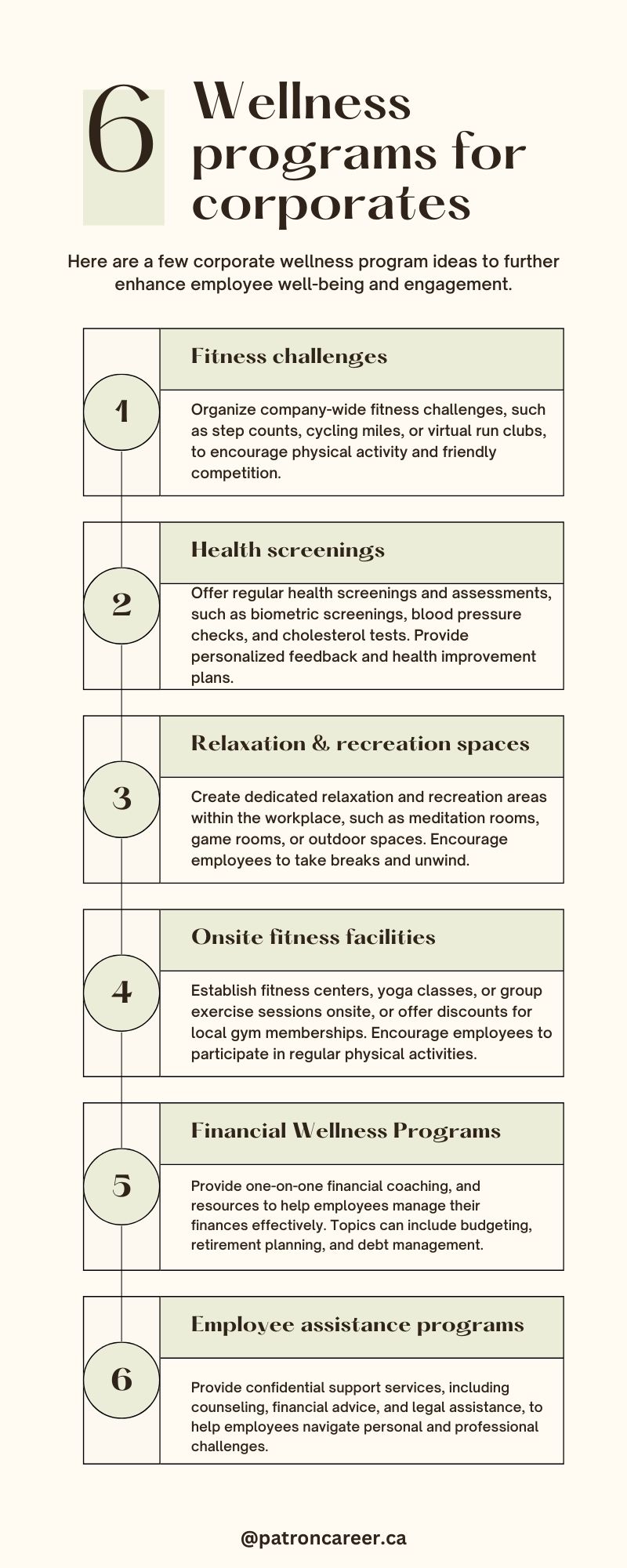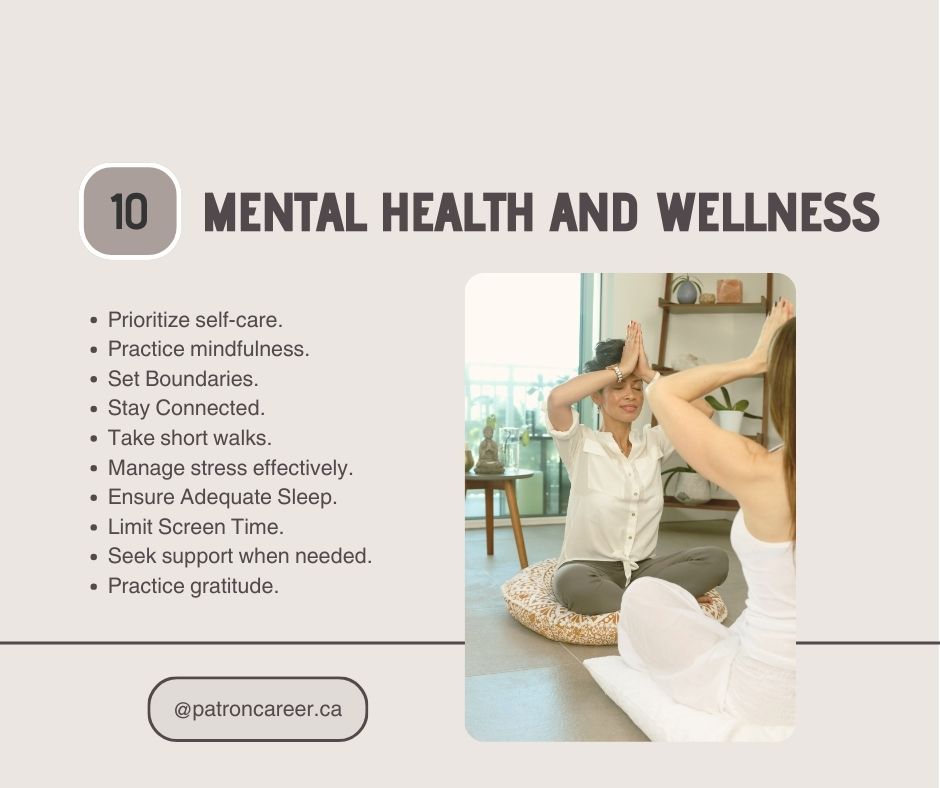
Hidden Productivity Killers
9 July, 2024
Patron Career Staffing firmly believes in adopting a tailored approach to meet temporary and permanent recruitment needs. We safeguard the interest of our clients by finding such workers who are knowledgeable and reliable.
About UsNeed help? Make a Call
32 Dundas Street East Unit A, L5A1W2

Lately, many organizations across the globe are acknowledging employee well-being as their topmost priority. Employee wellness is no longer a buzzword but has become a crucial aspect to drive productivity and enhance employee satisfaction in the workplace. Health concerns amongst the employee fraternity spread like wildfire, hence the need to curb work-related issues and implement a sound workplace wellness program is indispensable.
No matter the size and type of your company, having a robust employee wellness program will ensure that your employee’s needs are met and that the overall goals are also achieved without hampering anybody’s health.
Let's look at the key aspects of a successful workplace wellness program to understand what it entails, why you need one and the four essential components to build it.
The Essence of Workplace Wellness
What Is Workplace Wellness?
Do you know what is the driving force behind the high productivity and, motivation of your employees? Not just incentives and recognition, but also employee wellness ensures your people stay healthy and positive.
When defining workplace wellness, it's important to note that it consists of policies, programs and organized activities by an organization to support the workforce's health and well-being. Your employees are your most important assets and it's your responsibility to ensure they get access to a healthy lifestyle at the workplace. These programs aim to improve employees' quality of life by prioritizing emotional, physical and mental health and creating a balance between their personal and professional lives.
Read about the Best Practices for Building a Vibrant Workplace.
Why Workplace Wellness Matters
Companies that invest in employee wellness gain a strategic advantage over companies that don’t. This is how:
1. By focusing on their emotional and physical health employees become highly efficient and contribute positively to the company’s productivity.
2. Wellness programs offer fitness facilities and mental health resources that help reduce absenteeism.
3. Employees' level of engagement and motivation rises, as they feel seen, heard and valued.
4. A wellness program reduces turnover rates and also strengthens a company's reputation as it becomes an employer of choice attracting top talent.
How to Craft a Comprehensive Workplace Wellness Program (That Actually Works!)

Building a successful employee wellness program is a challenging task, but by following our point- wise easy strategy you can create a thriving workforce where your people can flourish:
1. Physical Well-Being: Moving Towards a Healthier You
The very first imperative businesses need to focus on is incorporating a physical health policy for employee wellness. Start by taking small steps like promoting activities and giving resources to inspire employees to stay active and maintain good physical health. Here are a few ideas:
. Fitness Rooms: offer employees on-site gyms or even subsidized gym memberships. Talk to your employees and assess their needs. Get to know what fitness facilities they would like the office to have.
. Health Screenings: people tend to ignore yearly checkups; you can provide annual health checkups to examine employees and identify any potential health concerns early on. This aims to promote preventive care.
. Regular Breaks: many employees ignore the importance of frequent breaks at work. It causes stress, health problems and eventually burnout. Your company can tend to this issue by creating awareness about short breaks to regain focus and boost energy levels.
2. Mental Health: Breaking the Stigma
Employee mental health is as important as their physical well-being. Your workplace wellness program should cater to create an open and supportive environment where employees feel comfortable sharing their mental well-being concerns.
. Stress Management Workshops: employees should have access to trainings and workshops for how to manage their stress and other workplace pressures with ease.
. Mental Health Resources: also, provide them with counselling services, on- site therapy sessions and employee assistance programs to address health concerns.
. Mindfulness Practices: encourage mindfulness at work and meditation practices to help manage stress and boost mental clarity.
3. Nutritional Support: Fueling Success
A workplace wellness program should focus on revitalizing employee energy levels and overall well-being. A company plays a huge role in promoting nutritional awareness:
. Healthy Snacks: equip the office cafeteria with healthy snack options to encourage healthy eating habits.
. Nutrition Workshops: create awareness about the role of a healthy diet. For this, you can organize workshops on healthy eating and cooking.
. Cafeteria Overhauls: Providing healthier meal options in company cafeterias can support employees in making better dietary decisions.

4. Work-Life Balance: Achieving Harmony
Balancing work and life is a daunting task. Companies can offer support to their workforce in this crucial regard to strengthen employee well-being and productivity:
. Flexible Work Hours: flexible working involves allowing employees to choose their work locations on decided days of the week or altogether to help balance their personal and professional commitments.
. Remote Working: give employees opportunities to work from home to reduce commuting stress and enhance work-life balance.
. Time-Off Policies: Regular breaks and vacations help deal with burnout and improve job satisfaction for the employees.
Read our All-Encompassing Guide on Workplace Burnout.
Get Started and Build a Culture of Wellness
Your workplace wellness program should revolve around the employee needs, otherwise it wouldn’t be a successful one. The next steps are focusing on creating a supportive environment, offering health improvement plans, and essentially building cognizance about the role of self-care and, mental health. Follow these imperatives conscientiously, and watch your company and its people flourish.
